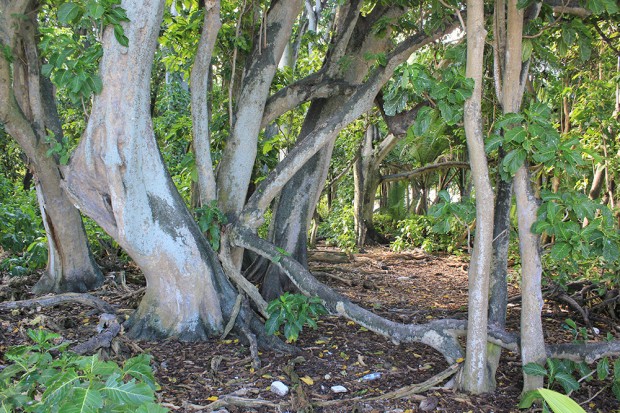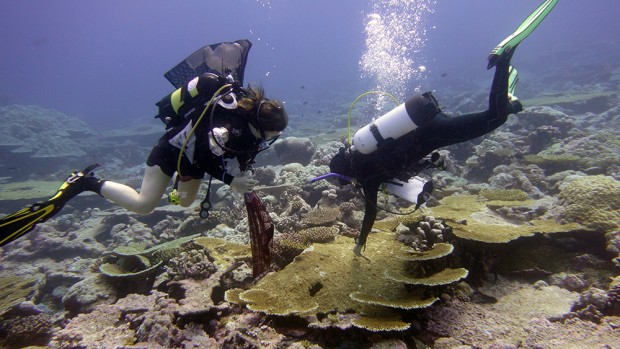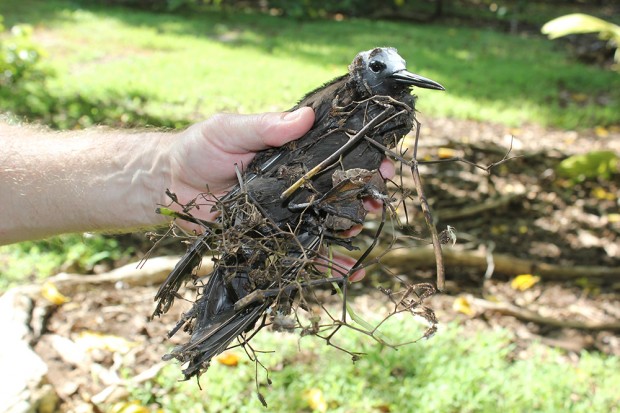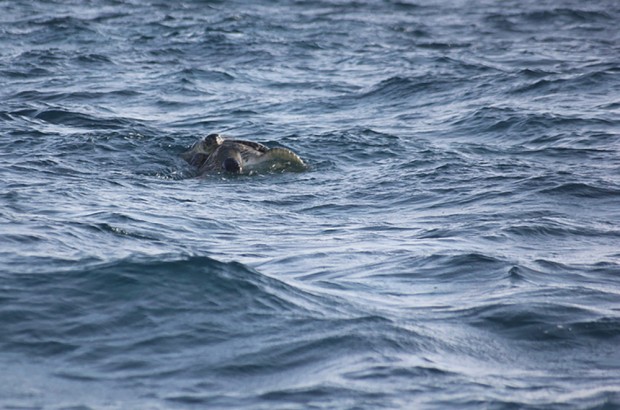2015 Darwin Science Expedition - Day 9 Tiny shrimp and turtle wrestling

The northern edge of peros banhos offered up its treasures today. The dive off Ile de la Pas provided some beautiful spectacles. There is a species of coral here in Chagos, physogyra, and on some of the colonies of this species you can find a particularly elusive commensal shrimp Vir philippinensis.

I was lucky enough to see one today. As the body is transparent and very small, perhaps only a centimetre long, the only evidence of these tiny creatures is their long purple antennae protruding out like fine hairs from between the corals bubble like polyps.
VIDEO https://www.youtube.com/watch?v=lgq86A173Sc
I’ve been taking an interest in small crustaceans on this trip and frequently find trapezia crabs in amongst the branches of pocillopora corals. The story goes that these crabs find a home amongst the coral and in return protect it from predators such as the crown of thorns starfish. When the COTs comes along the crab nips at the underside of the starfish as it tries to engulf the coral which deters the starfish into retreat.

After diving for the morning I joined the terrestrial team for the afternoon to take the Trekker camera around Ile Petit Bois Mangue. This island is particularly special for its glades of pisonia grandis. These majestic trees are home to thousands of breeding noddy terns. And are also a potential threat to the birds that make them their home. Their seed pods are burred and sticky…and in the case of noddies can be deadly. They’re designed to stick so that they will be carried by the seabirds to fresh land masses – but in excess they bind the birds hopelessly and many were on the floor of the island fading away in a tangle of seed pods.

On the way back to the research vessel we see a pair of green turtle mating off Ile Manoel. The third such pair that I have seen in the various trips I have made out here. These islands are a haven for these large reptiles and no matter what time of year you walk the beaches here you will find signs of fresh nesting activity. But it all starts in the water with what looks like a wrestling match between two large adults on the surface. Not wishing to disturb the two that we have seen we move on after snapping a few photos.

On completion of the days activities we get underway in the research vessel and are on the way to the coccilage islet pair as I write this...

